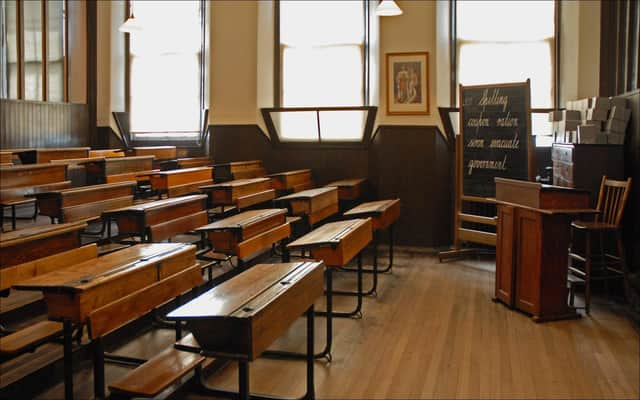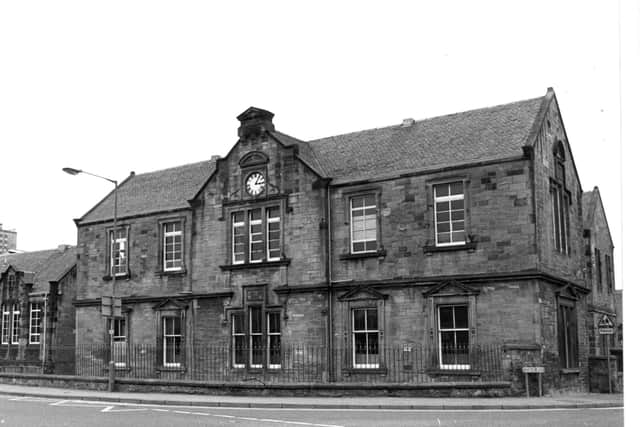Looking back with Ian Scott on school days in Falkirk district in the 1950s


It is 1950 and another school day is about to commence. With the nine o’clock bell ringing in our ears, I and 30 odd of my fellow sufferers file into a grim old Victorian building to meet up in fear and trembling with the grim old Victorian lady who stood arms folded at the big desk in front of us. All the classrooms had uncovered wooden floors and a coal fire, and in winter days the ‘jannie’ would pop in with a scuttle of coal to keep it blazing. We sat in rows at double desks which had lift-up lids with a little ink well in each corner. The teacher sat at the front at a high desk commanding the room and demanding silence under pain of punishment as she took us through the routine of the day.
We always began with prayers followed by a short burst of mental arithmetic. In those days we learned our multiplication tables by singing them out together but now you were on your own! The teacher would fire the questions; “Margaret McDonald four sevens?” Each day you prayed that she would miss you out. “Ian Scott seven eights? “Eh . . eh … 63 Miss” OUT! If the teacher was in a bad mood it meant the first belting of the day. We learned our tables!
Advertisement
Hide AdAdvertisement
Hide AdAfter this mental torture we had what were called ‘Bills’. The teacher would say “Four dozen pen nibs at one shilling and three pence a dozen; eighteen and a half pounds of tea at four shillings per pound” . . . and so on. We had to write these down in our jotters and add them up. Get it wrong and you were in line for another taste of leather.


After that things settled down to reading and writing with regular visits to the teacher’s desk. Writing with nib-pens was torture. The watery ink which the teacher’s pet got to pour into the inkwells was almost impossible to use without making big blots on the paper. Big blots were bad news and likely to lead to a rap over the knuckles with a ruler or the big wooden pointer which the teacher carried around the room and used at the blackboard. There was chalk dust everywhere and sometimes if you had been good you were sent outside to bang the dusters against the school wall. The mid morning bell was the signal for the arrival of the milk which came in little third-of-a-pint bottles which the wee ones would drink in their classroom. Older children headed off to the ‘pegs’ where the coats were hanging and we drank our quota along with the spare bottles some children refused to drink.
Up in Park Street, in what had once been the School of Arts and Science, cooks were busy preparing dinners for all the schools which came on lorries in small round aluminium containers. In the classroom we would hear them rattling on the ground outside and soon the smell of potato soup and semolina was mingling with the ever present aroma of burning coal and disinfectant. It was the signal fragrance of my childhood.